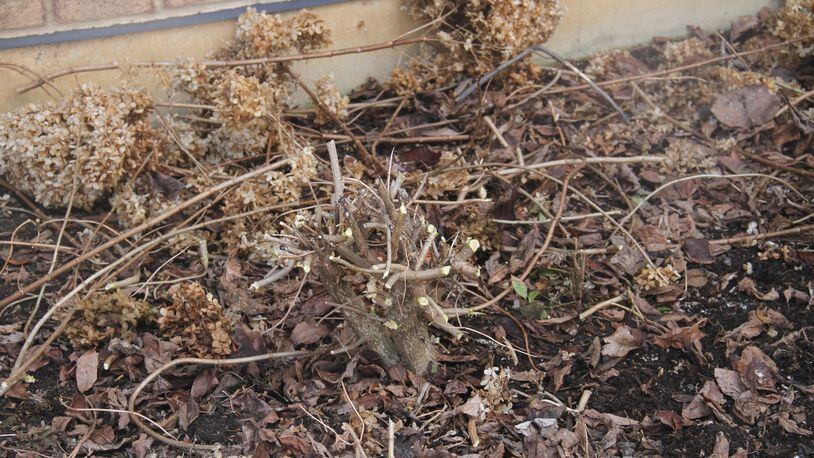When this happens, use a pruning technique called rejuvenation pruning. It’s very easy to accomplish and leads to a great looking, new plant.
Simply take your loppers or your pruning saw and cut all the stems back to about six to 12 inches above the ground. That’s it. Done.
This technique can be successfully used on many deciduous shrubs. It should be completed, however, before the new growth begins in the spring.
Deciduous shrubs store their energy in their root system for the winter. Therefore, in the spring they put all of this energy into new growth, resulting in the new plant.
If you aren’t willing to prune back this far, use another rejuvenation method. This method requires that you take about one-third of the older stems and remove them back to six inches.
Do this three years in a row; each year new growth will take over where the old branches were removed. This method is typically used with lilacs as hard pruning on a lilac results in about two or three years of no flowers.
Speaking of flowers, since you are doing this in the spring before new growth begins, it’s likely that you will prune off any spring blooms.
With forsythia, you could wait until after the blooms show off and then cut back. This is such a tough shrub that I have even pruned it this hard in the middle of summer and it came back.
I use this technique on quite a few of my shrubs. Red-twigged dogwood for instance, has a tendency to get a disease that causes the stems to turn brown instead of the nice red color that looks great in the winter.
I cut this back to six inches around every two or three years.
Every spring I cut potentilla, spiraea and barberry back to two or three inches. This results in a nice rounded shrub that it not straggly.
I also use this technique on several, but not all, of my hydrangeas. Limelight hydrangea for instance, has much larger blooms on shorter stems if I cut it back. Without cutting it back, it will get around 12’ tall with smaller blooms but more of them.
You really can’t kill these deciduous shrubs with harsh pruning. Experiment on your plants to see what you like.
Note I am writing about deciduous shrubs, not evergreens. Next week, watch for information on pruning evergreen shrubs.
About the Author
